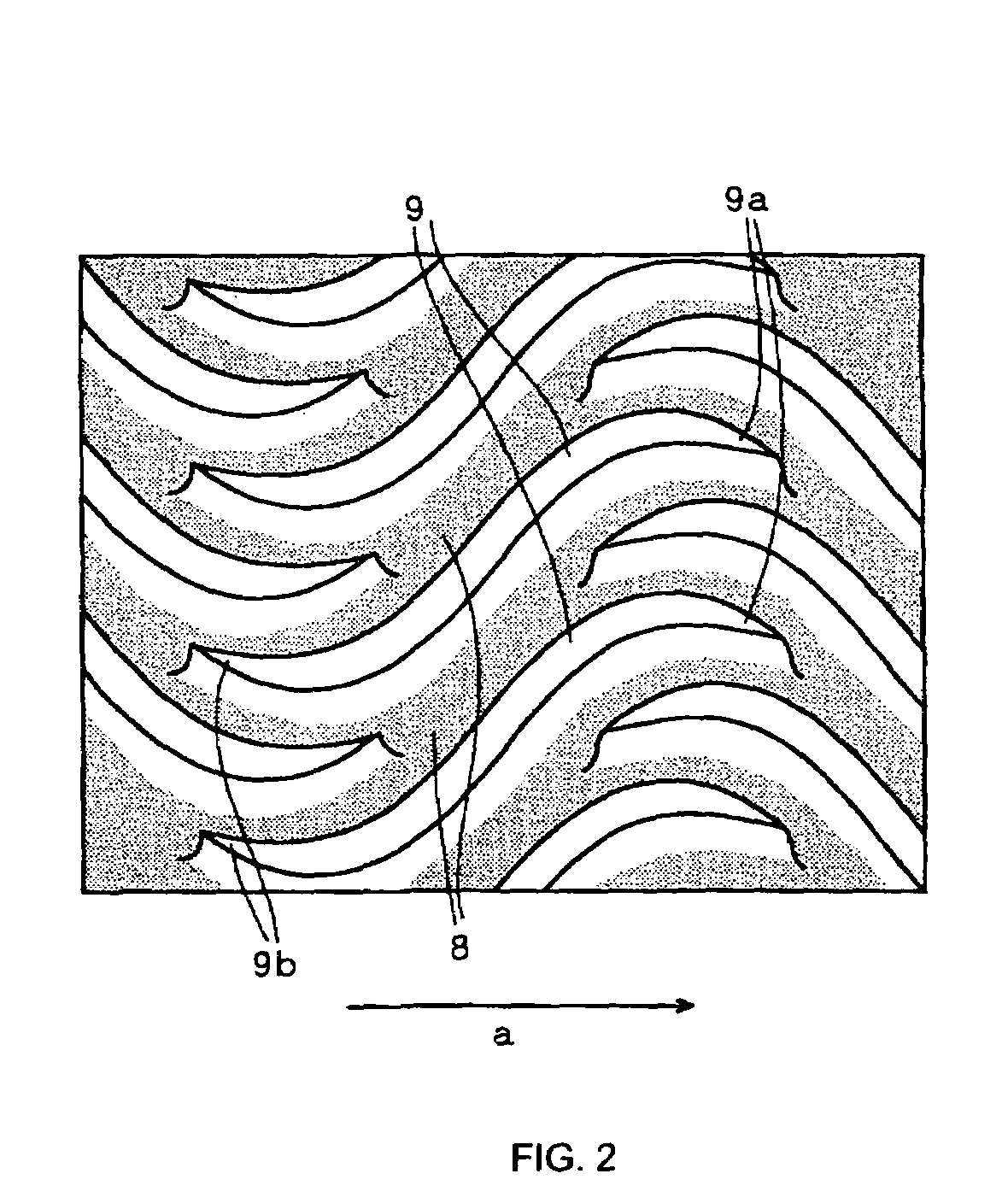Heat exchanger
a heat exchanger and platefin technology, applied in indirect heat exchangers, laminated elements, lighting and heating apparatus, etc., can solve the problems of increasing equipment costs and operating costs, increasing pump power, etc. reducing pressure loss, and reducing pressure loss
- Summary
- Abstract
- Description
- Claims
- Application Information
AI Technical Summary
Benefits of technology
Problems solved by technology
Method used
Image
Examples
Embodiment Construction
[0037]An embodiment of the invention will be explained below with reference to drawings.
[0038]FIG. 1 is a schematic diagram of the appearance of a heat exchanger according to the invention. In FIG. 1, thin metal plates 2, through which a high-temperature (hot) side fluid flows, and thin metal plates 3, through which a low-temperature (cold) side fluid flows, are stacked. Plates 6 are attached to the uppermost surfaces of the metal plates 2 and 3 and bottom plates 7 are attached to the lowermost surfaces of the metal plates 2 and 3 to form a box-shaped heat exchanger body 1.
[0039]The thin metal plates 2 and 3, which constitute the heat exchanger body 1, are made of an about a several mm thick stainless steel plate, a copper plate, a titanium plate, or the like. In addition, the thin metal plates 2 and 3 are firmly joined together by using compression bonding at a temperature close to their melting points or any other method in such a way that metallic atoms, which constitute the thin...
PUM
 Login to View More
Login to View More Abstract
Description
Claims
Application Information
 Login to View More
Login to View More - R&D
- Intellectual Property
- Life Sciences
- Materials
- Tech Scout
- Unparalleled Data Quality
- Higher Quality Content
- 60% Fewer Hallucinations
Browse by: Latest US Patents, China's latest patents, Technical Efficacy Thesaurus, Application Domain, Technology Topic, Popular Technical Reports.
© 2025 PatSnap. All rights reserved.Legal|Privacy policy|Modern Slavery Act Transparency Statement|Sitemap|About US| Contact US: help@patsnap.com



